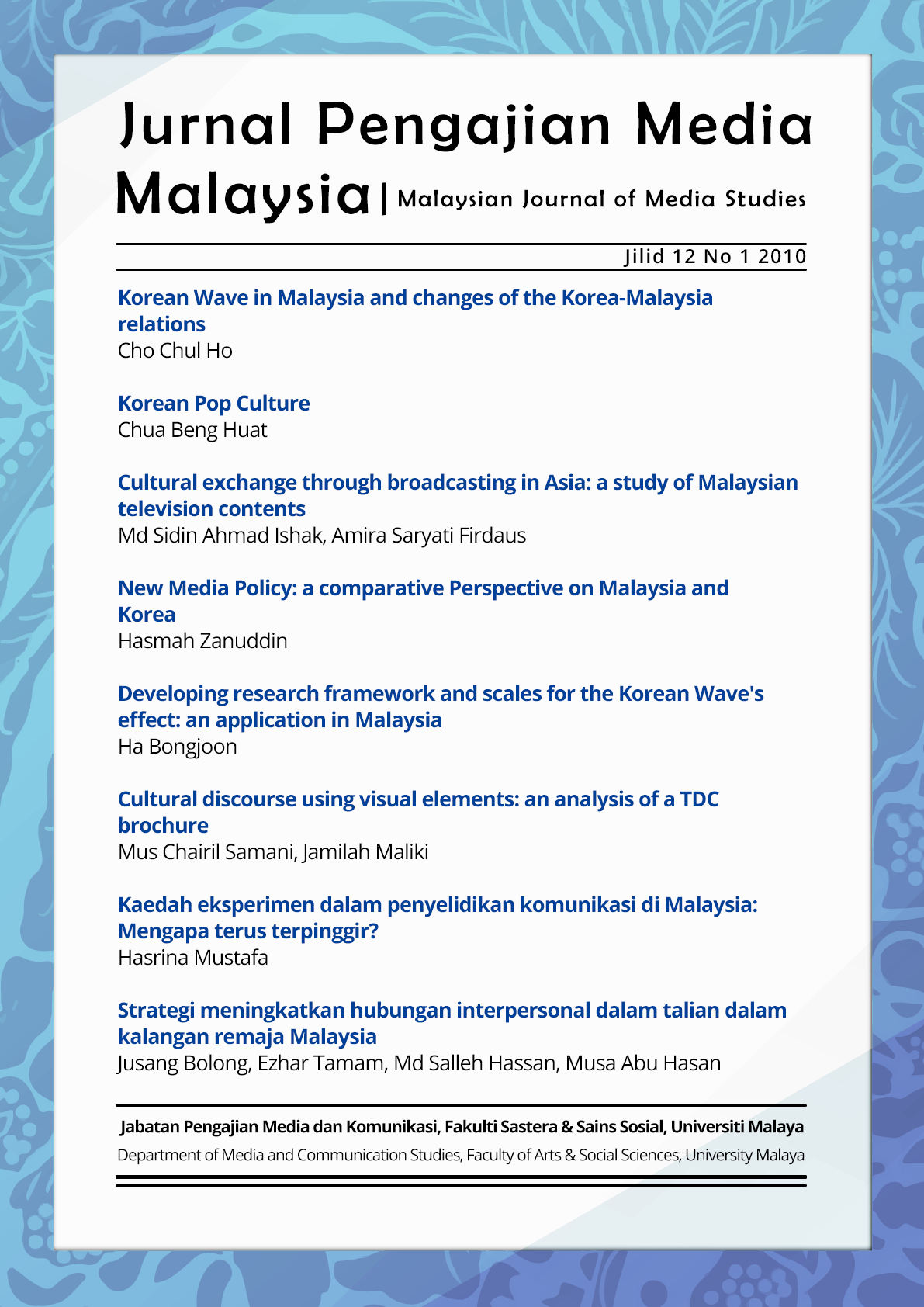New Media Policy: a comparative Perspective on Malaysia and Korea
Main Article Content
Abstract
This article focuses on external factors and pressure on the Korean and Malaysian media policy and its impacts towards their cultural industry, comparatively. Since World War II, the US has promoted free trade by continuous efforts to lower tariffs mostly through the GATT. However, such market liberalization with major trade partners fell short of US expectations and cheap imported products, such as Korean personal computers rushing into the US market in the 1980s. With ongoing trade deficits deepening, the US government finally started to demand comprehensive sanctions against unfair trade practices of foreign countries and enacted the Trade Act of 1974, which contains the well-known Section 301. The US promoted trade liberalization in media and cultural industry through the WTO and incorporated Section 301 in the WTO binding law and regulations. Thus, this paper discusses economic, social and political reasons why nations regulate to safeguard cultural industries in the WTO era. In addition to generating employment and revenue, cultural industries contribute to a sense of national and community well-being. It has been argued that cultural products are different from other consumer goods because they reflect the intrinsic values and characteristics of the societies that create them. Cultural protection measures are based on an assumption that local industries foster local creativity and indigenous talent which may otherwise have no expression. Such expression enriches the cultural life of the nation as a whole reflecting and contributing to people’s perceptions of their identity, character and culture. Audiovisual products are important media for cultural expression and have a powerful influence on the cultural and social life in many countries. Broadcast media generally, and television in particular, provide major outlets for audiovisual products. As such they are often the focus for cultural policies and safeguards.
Downloads
Article Details

This work is licensed under a Creative Commons Attribution 4.0 International License.
